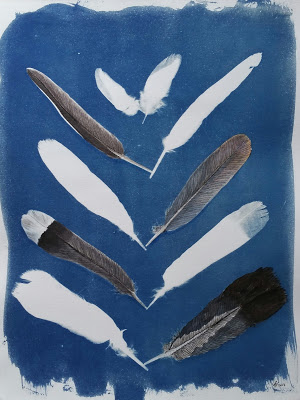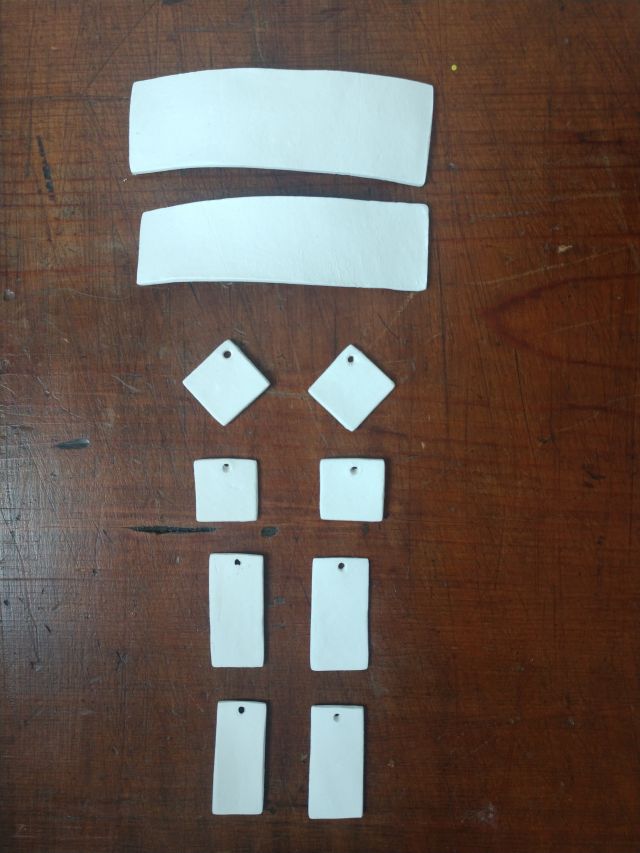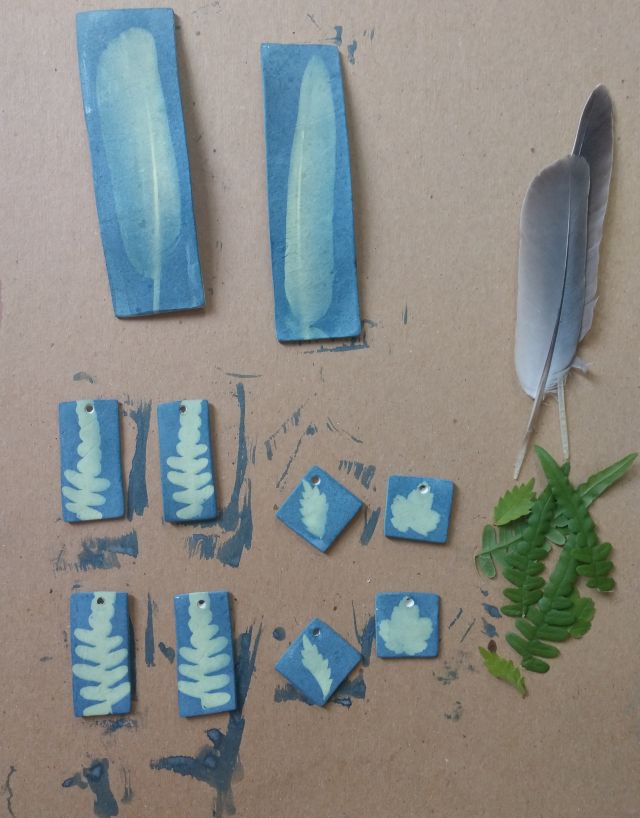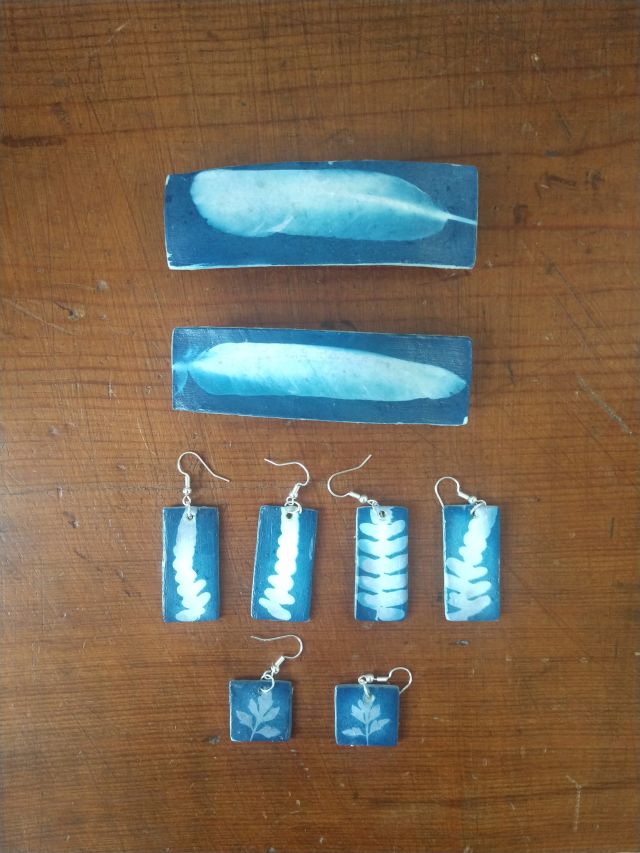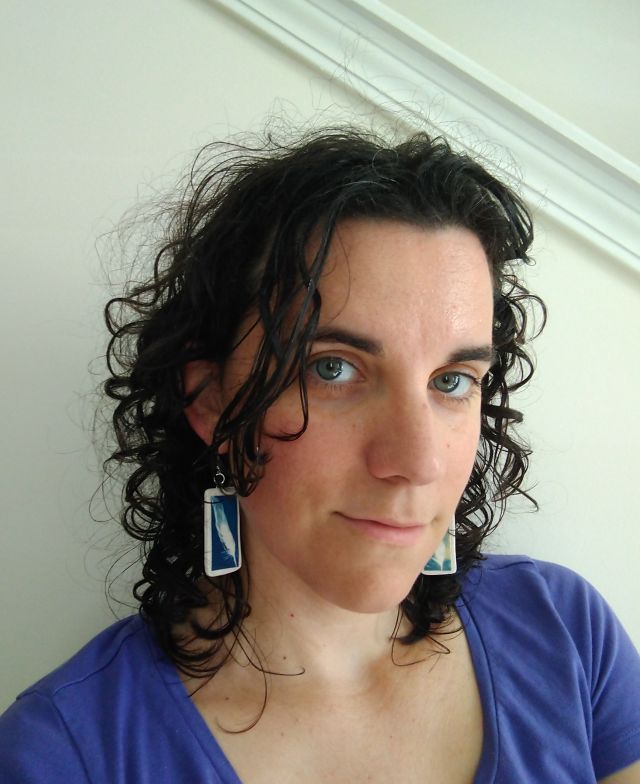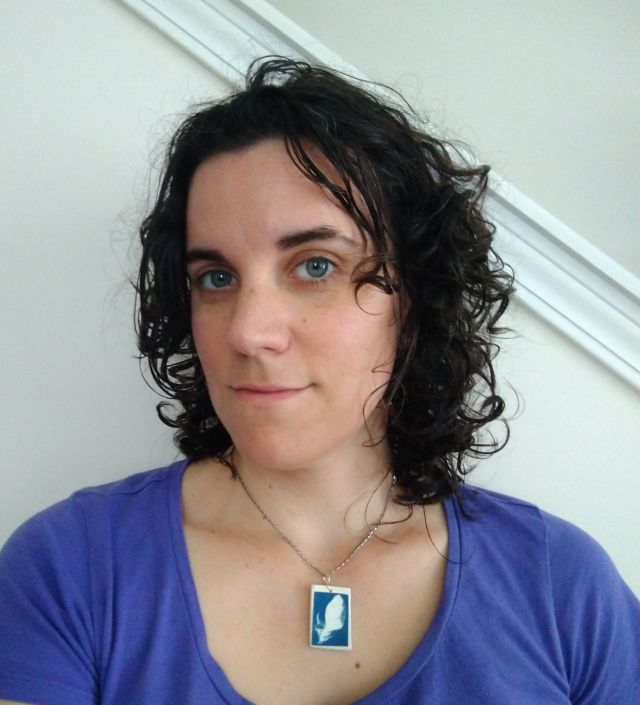Last month I told you about my recent interest in making jewelry using intaglio prints I had made on paper clay, and the potential I thought it had in pushing my creative practice into wearable or practical objects. Today, I’ll show you some more jewelry I’ve been making, this time featuring cyanotypes.
First, a little bit about the role of cyanotypes in my own work. I learned how to make them in 2017 after taking a workshop led by photographer David Emitt Adams, but I had been interested in the technique long before that. With their distinct blue color, a result of the chemical process used to make them, they make for striking photographic representations. Their association with pioneering botanists and photographers such as Anna Atkins, in turn, underscores the significance of women to the history of both photography and scientific representation. For me, cyanotyping has become an intermittent and often seasonal part of my own practice, with the majority of my prints being made during the summer when the days are replete with sunshine and the UV rays needed to instigate the photogram process. I’ll often add painting and drawing to these prints, creating trompe’oeil meditations on the nature of representation. For these latest experiments in jewelry though, I made cyanotypes without any additional drawing.
I had actually thought of making cyanotype jewelry before I came up with the intaglio earrings I shared last month, but ended up trying the printing first since I was already calibrating my minipress from the Open Press Project. The leaves and feathers are all things I’ve collected on walks or in my backyard, continuing my ongoing creative interests in my local surroundings.
As with the intaglio jewelry, there was a learning curve. I made my jewelry forms using paperclay, letting them fully dry this time. Initially, I tried making cyanotypes directly on the clay itself, with mixed results. During my first attempt, I rinsed the clay too long and the top layer ended up dissolving. The second time I didn’t leave the cyanotype solution on long enough and everything came out too light, so I coated them again and let them sit overnight. As such, these first extant pieces each feature two cyanotypes apiece.
Although I was happy that I was able to get legible images on the paperclay, I didn’t like the unpredictability of the process, as the clay’s vulnerability to water meant that I couldn’t rinse them as thoroughly as I would have liked. So for the next batch, I printed my cyanotypes on paper, cut the prints into individual pieces, and then pasted them onto dried paperclay forms. Of the two, I prefer this process because it gives me more control over the image.
I initially started working with small fern leaves and other vegetation I found on my walks, as most of the pigeon feathers I’ve amassed over the years are too big for earrings and other jewelry. During a walk though, I found a cluster of smaller pigeon feathers, probably the remnants of a cat attack or related predator. I love making feather cyanotypes because of the potential for depth: they transfer the nuances of light and shadow particularly well. Naturally I was excited to see how these pieces would translate into jewelry.

This final group shows a lot of variety process-wise. Some of the prints I rinsed for shorter periods to preserve the blue tone within the image, others I rinsed until the image turned white. Some were left out in the sun for a shorter period for a lighter blue, others longer for a darker one. A few pieces even got partially bleached after I left them sitting overnight on the drying paperclay, but I liked the effect so I kept them.
That’s probably the last batch I’ll make for a while, but I have a much better idea of what I’m doing now. In the meantime, I’ll probably see about reopening my Etsy shop, as I think these, along with the printed jewelry I was making earlier, might have an audience.

